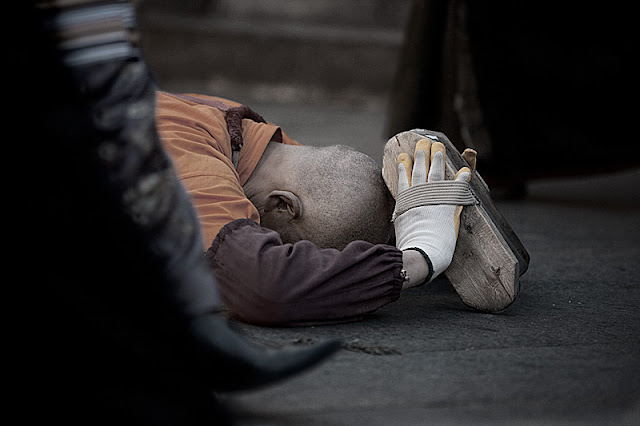
Vajrayana, refers to the third vehicle of Buddhism, often known as Lamaism, which originated in Tibet in the eight century and gradually spread to its neighboring countries. Vajrayana is made up the three Yanas of Theravada and Mahayana traditions, Vajrayana which is also regarded as Tantric or Esoteric Buddhism.
To practice it, one must have the skillful guidance of an accomplished Lama or Guru because its emphasis is mainly on ritualistic ceremonial actions and practices which involve the body, speech and mind technique, the body being valued as the proper vehicle for salvation.
Beginners to Buddhism are advised to have thorough in the Hinayana before moving into Mahayana. Only when their foundations are strong enough and they have gained sufficient of wisdom should they consider entering the Vajra path. It may be a vehicle that promise enlightenment within a single-life time and many are therefore likely to be attracted to it.
The training in Vajrayana must always be carried out under the direction of a Guru or Lama since it entails a variety of complicated ritual practice and it is not advisable for anyone to practice them by reading from any text books alone. Vajrayana or refers as a Diamond vehicle teaches that every Buddhas or Bodhisattva is associated with a particular mantra, mudra, which recite or performed correctly, can link one with the Deity in question and partake its transcendental powers.
A mantra consists of a number of syllables which when translated literally, may be quite meaningless, but it can be extremely effective when pronounced by one who has undergone the proper training and discipline and is familiar with its operations. Mantra, when uttered correctly, can have the power drive off evil spirits or thwart the actions of black magic sent by enemies, It must be WARNED that mantras should not be learned from text books or freely used.
The Vajrayana practitioners should be able to keep his or her personal practice, the Vajrayana vows and any teachings that one has received, secret and sacred. If one were to share with all and sundry, this will break the power of one practice and their vows and one will then take a longer time to fulfill their aspirations.
Not all Vajrayana teachings are suitable for beginner, if the practitioner were to share inappropriately, one may harm the listener by causing him or her to develop a negative view towards the teaching, and, towards the practitioner himself or herself. By doing so, the students will create negative karma which will be an obstacle to their practice. Yes you can or may discuss topics with your Vajra friends or share with your Guru or Lama, but not with everyone.

























